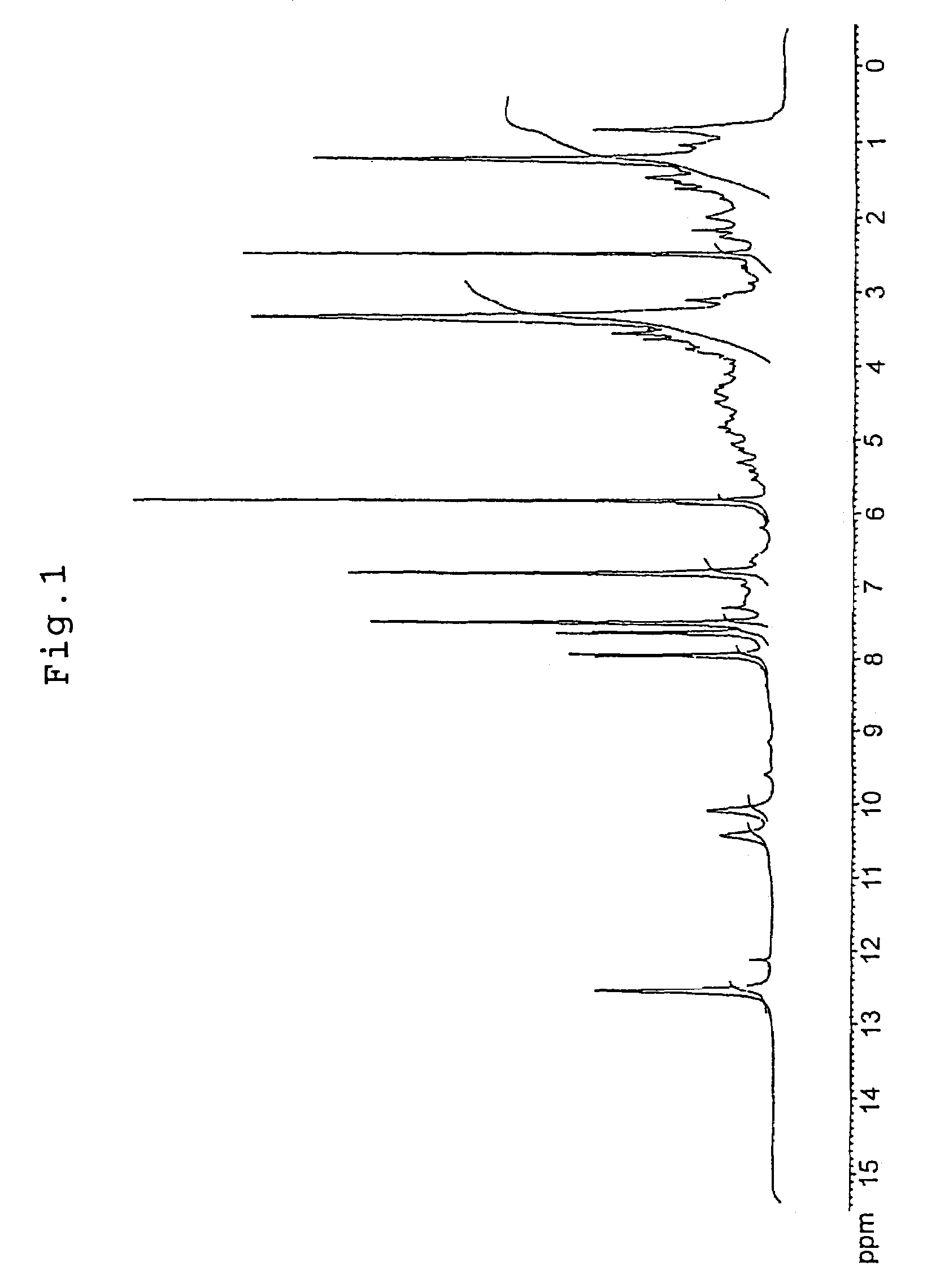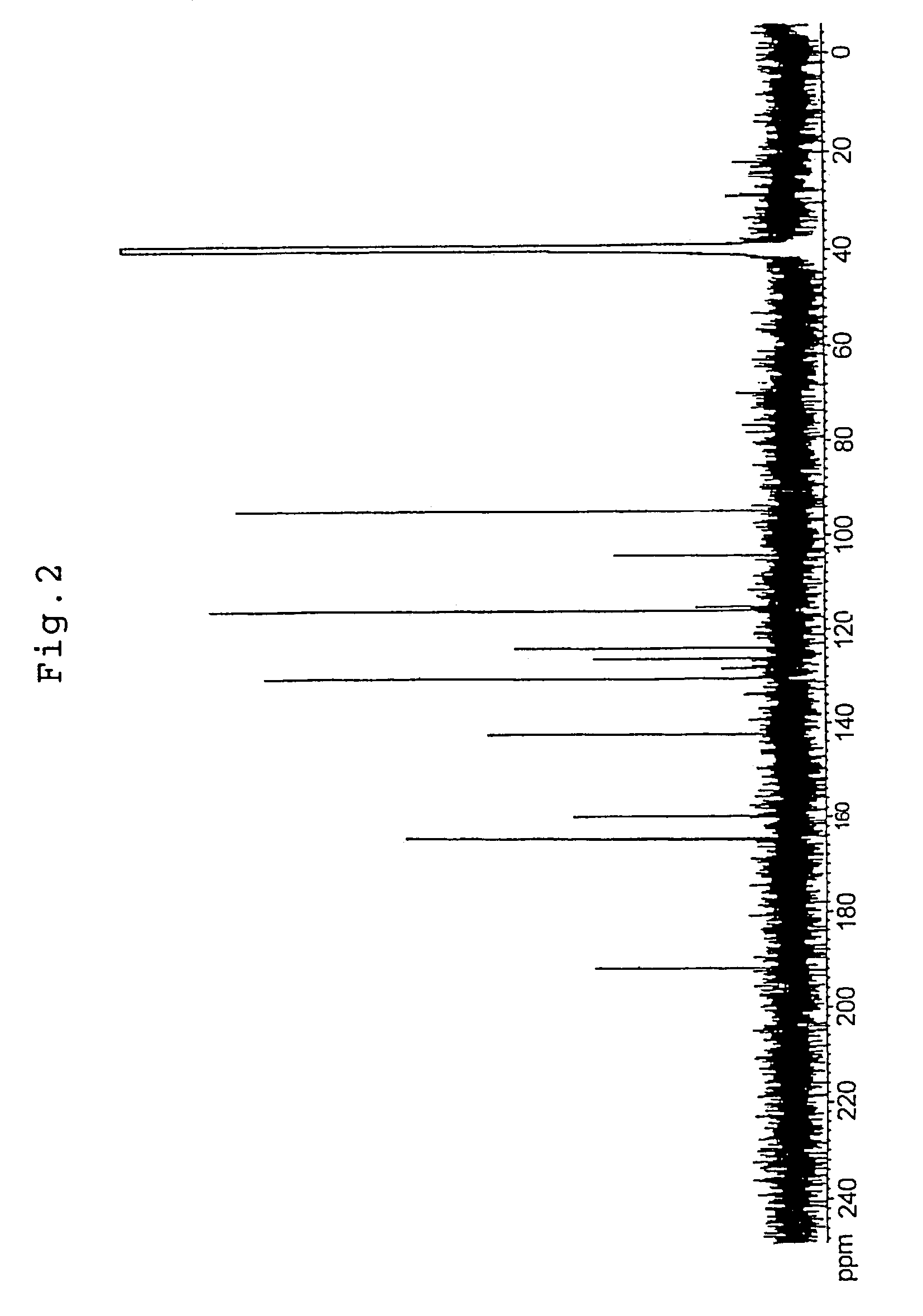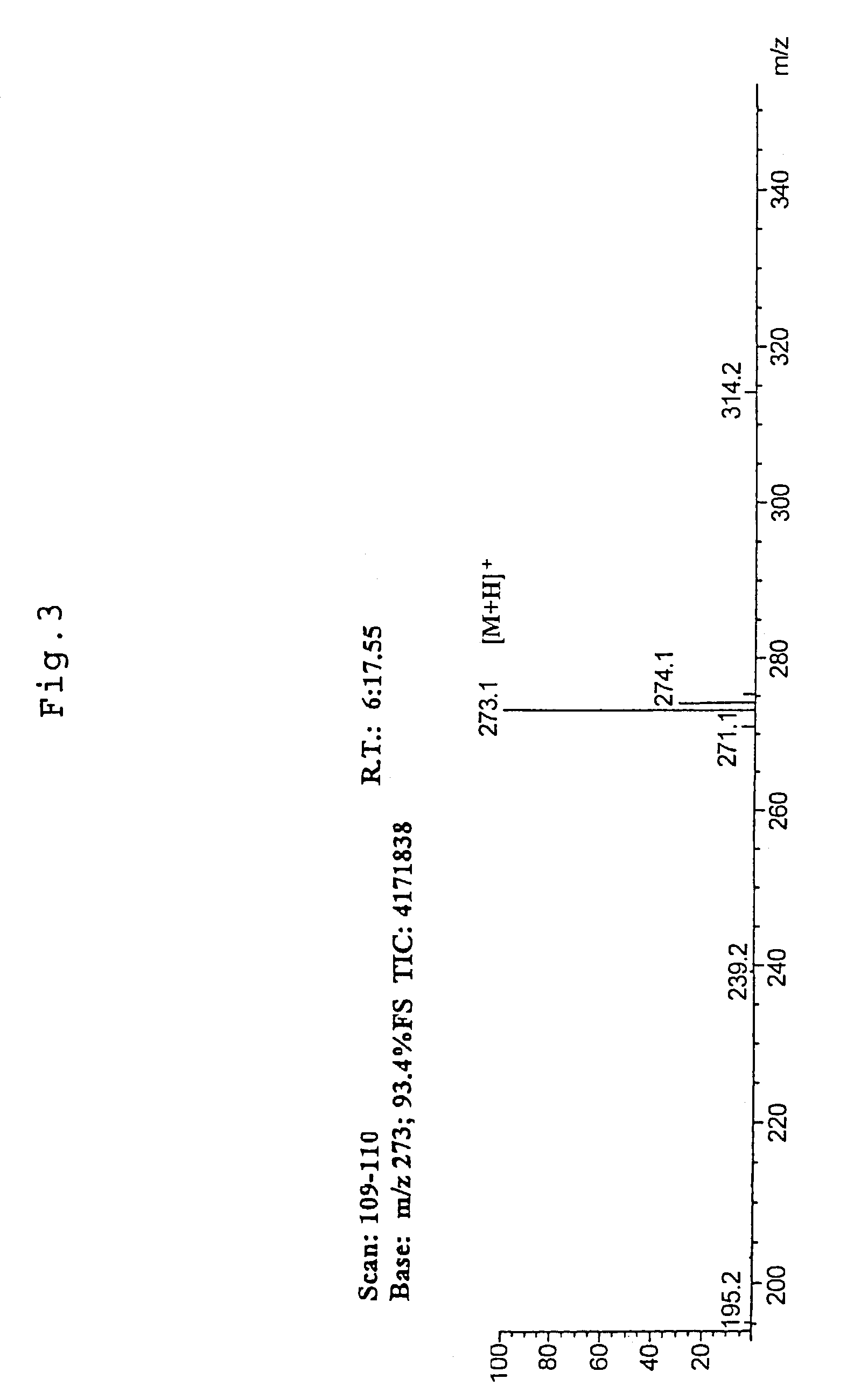Antiallergic agents, drugs, foods, drinks or cosmetics containing them and process for producing the same
a technology of antiallergic agents and tomato-based antiallergic agents, which is applied in the direction of hair cosmetics, immunological disorders, drug compositions, etc., can solve the problems of few naturally occurring substances known to have antiallergic activity, hardly any naturally occurring substances obtained, and the effect of reducing the risk of allergic reactions
- Summary
- Abstract
- Description
- Claims
- Application Information
AI Technical Summary
Problems solved by technology
Method used
Image
Examples
example 1
Example 1-1
Preparation of Tomato Extract
[0095](1) 20 g of squeezed and dried tomato residue were crushed with a mixer, and then, 200 ml of water was added thereto and the mixture was heated under reflux at 60° C. for carrying out water extraction to remove impurities. Subsequently, the extraction residue was collected and subjected to additional extraction by adding 200 ml of 60% ethanol as a solvent and by heating under reflux at 70° C. After filtering the resulting extract solution, the filtrate was concentrated under reduced pressure and freeze-dried, to give 812 mg of tomato extract powder (Tomato Extract 1).
[0096](2) In the same manner as in the above (1), except for using 60% methanol as a solvent, 753 mg of tomato extract powder were obtained (Tomato Extract 2).
[0097](3) In the same manner as in the above (1), except for using 60% ethyl acetate as a solvent, 625 mg of tomato extract powder were obtained (Tomato Extract 3).
example 1-2
Preparation of Tomato Extract
[0098](1) 100 g of tomato paste was separated by centrifugation, and the resultant residue was collected. The resulting precipitates were freeze-dried, and 80 ml of ethanol and added thereto for extraction, and the extract was dried under reduced pressure to give 800 mg of extract powder (Tomato Extract 4).
[0099](2) 300 g of raw edible tomatoes were crushed with a juicer and then, subjected to centrifugation to collect the residue. The resulting residue was freeze-dried and 150 ml of ethanol was added thereto for extraction and the extract was dried under reduced pressure to give 1.94 g of extract (Tomato Extract 5).
example 1-3
Purification of Naringenin Chalcone
[0100]Tomato pericarp was extracted with 60% ethanol in warm water bath at 60° C. for 2 hours. The extract was filtered, and the resulting filtrate was concentrated under reduced pressure. It was fractionated by high-performance liquid chromatography (column: SHISEIDO CAPCELL PAK C18 15 mm diameter×250 mm; eluent: acetonitrile containing 0.1% trifluoroacetic acid / water=40 / 60) to give a histamine-release inhibitory component. The above component was identified by utilizing LC-MS, NMR and so forth. The 1H-NMR spectrum is shown in FIG. 1, the 13C-NMR spectrum is shown in FIG. 2, and LC-MS is shown in FIG. 3. Said compound was confirmed to be naringenin chalcone based on the above results. Furthermore, the histamine-release inhibiting activity of the fractions obtained at each stage of purification was measured according to the method described in Example 2.
PUM
| Property | Measurement | Unit |
|---|---|---|
| temperature | aaaaa | aaaaa |
| concentrations | aaaaa | aaaaa |
| concentrations | aaaaa | aaaaa |
Abstract
Description
Claims
Application Information
 Login to View More
Login to View More - R&D Engineer
- R&D Manager
- IP Professional
- Industry Leading Data Capabilities
- Powerful AI technology
- Patent DNA Extraction
Browse by: Latest US Patents, China's latest patents, Technical Efficacy Thesaurus, Application Domain, Technology Topic, Popular Technical Reports.
© 2024 PatSnap. All rights reserved.Legal|Privacy policy|Modern Slavery Act Transparency Statement|Sitemap|About US| Contact US: help@patsnap.com










